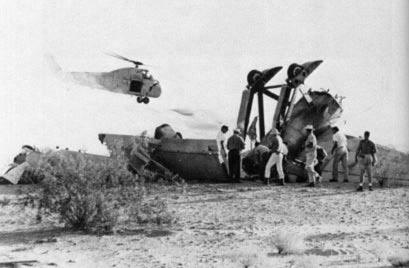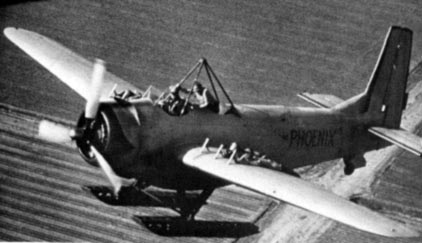 | Check-Six.com | |
Offering Aviation History & Adventure First-Hand! | ||
| ||||||||||
The Final Flight of the "Phoenix"July 8th, 1965
Humble Beginnings...To get the union officials to notice him, he set a new world record of 46 consecutive outside loops in July 1930. Soon after, he earned his union card. He really became noticed by Hollywood were he flew as a stunt pilot for the Howard Hughes war epic, “Hell’s Angels”. Although Mantz performed many aerial stunts, he specialized in flying through buildings. In the 1932 movie "Air Mail", he guided a Stearman plane through a 45-foot-wide aircraft. A well-rounded pilot, he also tutored Amelia Earhart in long-distance flying and navigation before her attempted round-the-world flight in 1937. During the Second World War, Mantz served as commanding officer of the Army Air Corps' First Motion Picture Unit, delivering hundreds of training films and documentaries on the air war. After the world, Mantz owned the fifth largest Air Force in the world, buying surplus aircraft from the United States government after World War II, as well as winning the Bendix Trophy Race three times between 1946 and 1948. He developed a number of camera and aeronautical innovations to improve aerial photography, and continued as a stunt flyer (he once flew under the Golden Gate Bridge for the movie "This is Cinerama"), a director of aerial photography, and a supplier of aircraft and pilots for the movies for two decades after the war. He formed a company, with legendary pilot Frank Tallman, named Tallmantz Aviation in 1961 based at Orange County Airport (now John Wayne Airport) in Southern California. Together, they provided pilots, camera planes, and a small fleet of antique and historic aircraft for movie and television productions. Mantz loved restoring and rebuilding rare aircraft, such as a copy of Lindbergh’s “Spirit of Saint Louis”.
|
On the second pass of one of the final shots of the film, one of the landings skids of the improvised aircraft caught a hard patch of ground, and started to lose control. Mantz kicked the engine’s throttle to full, and broke free of the dirt, but the plane was already stressed to breaking point. At over 90 MPH, the plane snapped apart and, momentarily, the two crewmembers flipped forward and hung out of the cockpit. As the break apart continued, the wings turned under the plane’s main body, and toppled on top of the two men, throwing Rose clear of the crash, but pinning Mantz. The cameras were still rolling, capturing the entire sordid event on celluloid. People rushed towards the crash site, in an effort to see what could be done. Both crew members were expedited to the hospital in Yuma. Mantz was killed instantly, and the crash broke the pelvis and left shoulder of Bobby Rose. |
|
 | PostscriptUnfortunately, Mantz might have survived the mishap, as the cockpit portion of the aircraft was unharmed, but instead of a crash helmet like he would normally wear in an open cockpit, he was requested to wear a soft-brim hat that actor James Stewart also wore in the film. Over 400 people came to Mantz’ funeral at Forest Lawn Memorial Park in Hollywood, including Jimmy Stewart and Jimmy Doolittle. Mantz was cremated and inurned at Pacific View Memorial Park, in the Mausoleum of the Pacific’s Palm Court and Alcove of Devotion, Niche 43. |
The Federal Aviation Administration determined that Mantz misjudged his altitude, and in the inadvertent touchdown, the airframe failed due to overload stresses. The investigators also stated the Mantz' alcohol consumption prior to the flight contributed to the accident by impairing his "efficiency and judgment". After the crash, an O-47, the only plane of its type then in the air was rented from the Ontario Air Museum (now Planes of Fame) to finish the flying sequences. |  | ||
| The 1965 film is dedicated to Mantz' memory, stating "It should be remembered ... that Paul Mantz, a fine man and a brilliant flyer gave his life in the making of this film..." Tallman, heartbroken by the accident, blamed himself for Mantz' death. The injury to Tallman’s kneecap later became infected, and ultimately he lost his leg. Bobby Rose returned to work at 20th Century Fox in early August, but did little work in Hollywood afterwards. He passed away in 1993. The movie went on to become a box office hit, and was remade in 2004. |
|